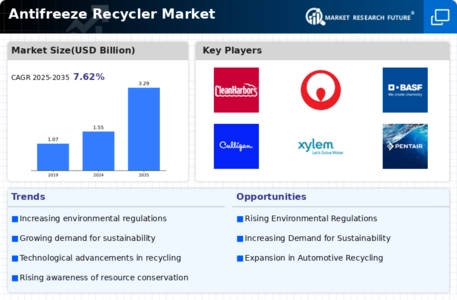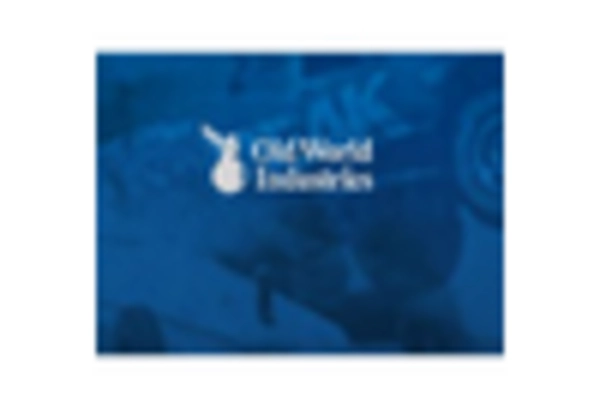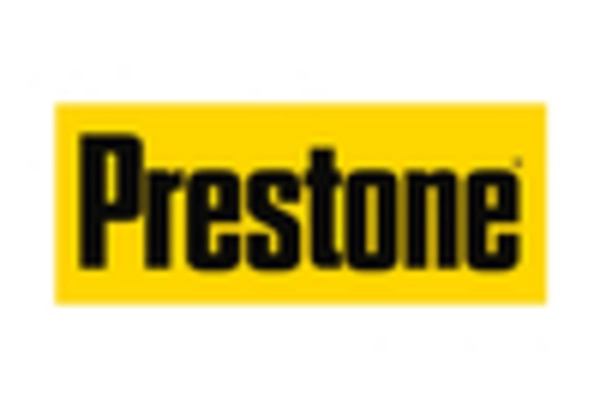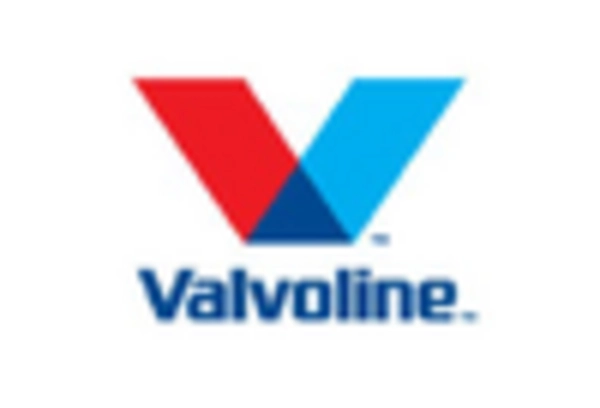Cost-Effectiveness of Recycling
The economic advantages associated with recycling antifreeze serve as a significant driver for the Antifreeze Recycler Market. Recycling antifreeze can lead to substantial cost savings for both businesses and consumers. By reusing antifreeze, companies can reduce their purchasing costs and minimize waste disposal fees. Moreover, the recycled antifreeze often meets or exceeds the quality of new products, making it a viable alternative. As the market for recycled antifreeze expands, it is estimated that the cost savings could reach up to 30% compared to traditional antifreeze procurement. This financial incentive encourages more businesses to adopt recycling practices, thereby bolstering the Antifreeze Recycler Market. The potential for reduced operational costs is likely to attract new entrants into the market, further stimulating growth.
Rising Demand from Automotive Sector
The automotive sector's growing demand for recycled antifreeze is a crucial driver for the Antifreeze Recycler Market. As vehicles become more sophisticated, the need for high-quality antifreeze has escalated. Many automotive manufacturers are now prioritizing the use of recycled antifreeze in their production processes, recognizing its environmental benefits and cost-effectiveness. This trend is reflected in the increasing partnerships between recycling companies and automotive manufacturers, which aim to ensure a steady supply of recycled products. It is estimated that the automotive sector accounts for a significant portion of the antifreeze market, with recycled antifreeze expected to capture a larger share in the coming years. This shift not only supports sustainability goals but also enhances the overall growth prospects of the Antifreeze Recycler Market.
Environmental Sustainability Initiatives
The increasing emphasis on environmental sustainability is a pivotal driver for the Antifreeze Recycler Market. As industries and consumers alike become more aware of their ecological footprints, the demand for recycling antifreeze has surged. This trend is further supported by various governmental policies aimed at reducing waste and promoting recycling practices. In fact, the antifreeze recycling market is projected to grow at a compound annual growth rate of approximately 5% over the next few years. This growth is indicative of a broader shift towards sustainable practices, where recycling antifreeze not only conserves resources but also minimizes harmful emissions associated with improper disposal. Consequently, companies within the Antifreeze Recycler Market are increasingly investing in advanced recycling technologies to meet this rising demand.
Regulatory Support for Recycling Initiatives
Regulatory frameworks supporting recycling initiatives are a vital driver for the Antifreeze Recycler Market. Governments worldwide are implementing stricter regulations regarding waste management and recycling practices, which directly impact the antifreeze market. These regulations often mandate the recycling of hazardous materials, including antifreeze, thereby creating a structured environment for recycling operations. Compliance with these regulations not only helps companies avoid penalties but also positions them favorably in the market. As a result, businesses are increasingly investing in recycling technologies and processes to align with regulatory requirements. The anticipated growth in regulatory support is likely to enhance the operational landscape for the Antifreeze Recycler Market, fostering a culture of sustainability and responsible waste management.
Technological Innovations in Recycling Processes
Technological advancements in recycling processes are transforming the Antifreeze Recycler Market. Innovations such as advanced filtration systems and chemical separation techniques are enhancing the efficiency and effectiveness of antifreeze recycling. These technologies not only improve the quality of the recycled product but also reduce the energy consumption associated with the recycling process. As a result, companies are able to produce high-quality recycled antifreeze that meets stringent industry standards. The integration of automation and artificial intelligence in recycling facilities is also streamlining operations, leading to increased productivity. This technological evolution is expected to drive market growth, as businesses seek to leverage these advancements to improve their competitive edge in the Antifreeze Recycler Market.


















Leave a Comment